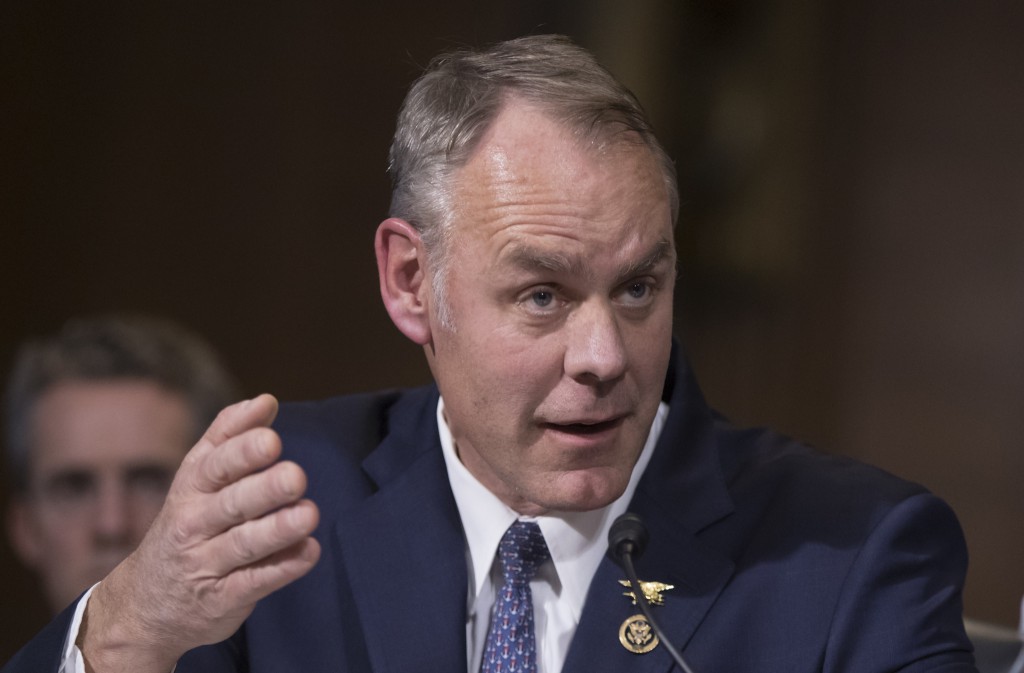Rep. Ryan Zinke (R-MT), President-elect Trump’s nominee for Interior Secretary, finished his ‘How Do You Do?’ hearing before the U.S. Senate Committee on Energy and Natural Resources on Tuesday. The results, as is often the case in the public lands universe, are coming up Utah.

Do you want the good news or the bad news? Or both? In the hearing, Rep. Zinke said more than once that visiting the Beehive State was his “first order” should he be confirmed—even confirming that to Sen. Manchin, who was fishing for West Virginia as the answer.
SUWA, naturally, welcomes any new secretary of Interior who proposes to visit us in what he called our “Great State of Utah.” Utah’s public lands are the crown jewels of those managed by the secretary—some of the last unprotected wildernesses in the lower 48—indeed, the last to be mapped because of their rugged and untamable beauty.
But, we have serious concerns about Zinke’s nomination. His record is partly cloudy on its fairest days. He’s a dyed-in-the-wool fossil fuel booster, and he lauds industry deregulation. He has occasionally made a point of resisting public lands giveaways of the kind that extremists in Utah champion, and he did defy Rep. Rob Bishop’s attempts to dismantle the Land and Water Conservation Fund. But these qualifications were once the cellar for an incoming Interior Secretary—not the ceiling.
That President Obama just designated 1.35 million acres of the Bears Ears National Monument only underscores the importance of Zinke’s promised visit. If confirmed as DOI boss, Zinke will be the head liaison between the U.S. government and the many sovereign tribes of this nation. Because an unprecedented coalition of tribes—the Navajo, the Zuni, the Hopi, the Ute Mountain Ute and the Ute Indian Tribe—came together to request the monument in honor of the heritage they all share in this landscape, it will be mandatory for the next DOI Secretary to meet with them and understand their role in protecting this place. Anything less is a total sham. And Zinke’s hedges on the next administration’s intentions were a red flag.
That’s why, at the hearing, one of our great public lands champions, Sen. Martin Heinrich, made a point of reminding Rep. Zinke that even tribes in New Mexico are celebrating the new Bears Ears National Monument. It’s obvious that native people of many states, and diverse citizens of all fifty, are joining together to rejoice in this new designation, which will endure for generations.
But we worry the nominee doesn’t truly see it that way. In justifying Utah as a priority visit at the hearing, Zinke drew on his Navy Seal background and called it a “five-meter target,” (i.e. the thing immediately in front of you) and proclaimed that “obviously we have a problem in the Great State of Utah.”
That almost sounds like he sees our state as a threat, doesn’t it? It’s clear he needs some better intel.
Rep. Zinke has vowed to visit with those “affected” by the Bears Ears and make a “recommendation” to President Trump about its future. That handshake tour requires at least two stops beyond what a bitter Utah delegation would show him:
First, Zinke must meet with the tribes who so passionately worked for its protection and assist them in their goals—certainly they are affected.
Second, as the local conservation group that has worked on Utah wilderness for more than 30 years, and knows these lands inside and out, Rep. Zinke needs to meet with our staff in Moab. Our folks in Moab are closer to parts of the monument than any town in San Juan County. We’ll gladly accommodate his schedule so we can show off what our nearly 13,000 members know to be true: that these public lands are among the nation’s most wild, most fragile and most precious, and that his job is one that will require true vision.
In the hearing, Zinke repeatedly professed his admiration for President Teddy Roosevelt, who first designated the Natural Bridges National Monument, which the new Bears Ears National Monument adorns and completes with holistic, 21st Century boundaries. Zinke claimed today he hoped to be “bold,” to seek a vision for “100 years from now.” We hope the Montanan will live up to that professed dream, by looking to the possibilities and economies of the future instead of the past.
After all, Teddy Roosevelt himself signed the Antiquities Act that made the Bears Ears National Monument possible. And, as the 26th president said, “Of all the questions which can come before this nation, short of the actual preservation of its existence in a great war, there is none which compares in importance with the great central task of leaving this land even a better land for our descendants than it is for us.”

